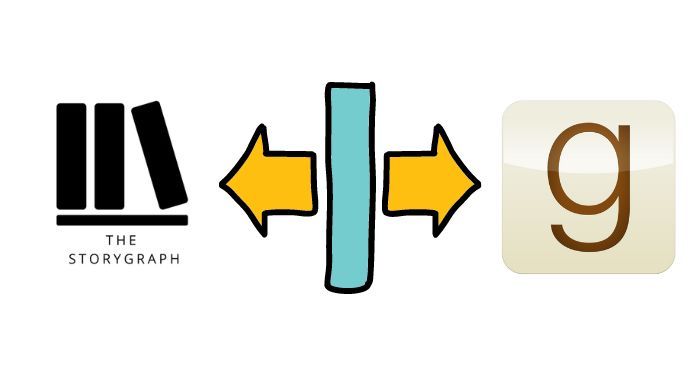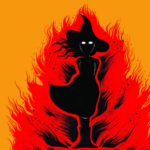
Do Goodreads and StoryGraph Users Rate Books Differently?
As much as we’d rather avoid using Goodreads for a variety of reasons, it may be useful for book discovery. It was the first social media site about books, and as a result, it has the most users.
But even with Amazon’s backing, it still has a number of issues, particularly with how it handles its users’ data and complaints on the site. The platform has had its fair share of bots, fake reviews, and abuse throughout the years. This caused many readers to seek out alternatives, such as The StoryGraph, which has a sleek website, a smooth user experience, personalized recommendations, and a functional tracker — features not typically found on Goodreads.
Two major features that readers love on Goodreads, however, are the ability to assign stars and leave reviews, whether the book is finished or not. Users can leave GIF-filled reviews if words fail to express how they feel about a book. They can give books one to five stars, with one being negative and five being positive. Indeed, rating and reviewing, now inextricably linked, have become staple features of Goodreads and Goodreads-like platforms.
But as a stiff competitor, how do StoryGraph ratings differ? Is there really such a big difference between StoryGraph and Goodreads (and Amazon)? Should you continue to use Goodreads?
How Do Readers Rate Books on Goodreads
On Goodreads, readers rate books from one star to five stars. They can also leave reviews accompanying the rating. These reviews can be written in simple HTML, and readers can add formatting, GIFs, and emojis to express their thoughts and feelings about the book.
Readers can also change their ratings and edit their reviews whenever they want. These individual ratings add up to generate an overall average rating for the book. This rating, however, may not be reliable because there may be fake reviews, bots, reviews from review bombing schemes, and reviews that don’t add value to the conversation.
How Do Readers Rate Books on StoryGraph
Meanwhile, StoryGraph’s rating and reviewing are on a different level. When you mark a book as read, it prompts you to write a review, but you can choose not to.
Otherwise, it redirects you to a review page where you need to provide some information, such as:
- Mood. Readers can label the book as “hopeful” and/or “reflective,” among many other adjectives. This helps other readers who are looking for the same vibes, also known as mood readers.
- Pace. Personally, I prefer my science fiction and fantasy to be fast-paced (and I believe it should be), so knowing that the pace is quick would have me finishing it in no time. But if I find that it’s sluggish, I won’t consider it at all. This information is useful to avoid wasting time on books that aren’t a great match.
- Style. Plot- or character-driven?
- Characters. Is there a strong character development? Are the characters loveable? Are the flaws of the main character(s) a main focus of the book?
- Diversity. I’m surprised and elated that this option is available on StoryGraph. In that way, I know which books to prioritize.
- Spoilers. The site would also ask if there is anything you’d like to add (maybe some spoilers that you can hide).
- Themes. It also asks the main themes, topics, or tropes in order “to help other users find similar books.”
- Content warnings. Is it graphic, moderate, or minor?
Like Goodreads, it also gives an option to assign a star rating. The big difference is that you can add quarter stars to achieve that holy middle ground of 2.5 stars, or if you love the book except for some annoying character, 4.75 stars.
On the book page, you can even see a summary of reviews containing all of the information that you may have filled out. StoryGraph aggregates all of these and generates a piece of summarized information about the book based on detailed user reviews, similar to MetaCritic.
Overall, a StoryGraph review — if a user completed filling in everything — can be comprehensive. It can be accurate and insightful, unlike the reviews on Goodreads that are all over the place.
How Do Readers Rate Books on Amazon
You can rate and review a book when you click the “Write a Customer Review” button on the product page. From there, you can see your past purchases. You must, however, meet the minimum eligibility requirements to write one: you must have spent at least $50 on Amazon.com in the previous year. If you’re eligible, you can even write a review without ever buying the book. If someone wrote a review and bought the book itself, the review would also label it a Verified Purchase.
Reviewing on Amazon is bare-bones. If you want to purchase a book there and look at the reviews and ratings, they can be misleading because some Amazon products are known to have fake reviews. In addition, the reviews feel general, and the reviewing system isn’t specifically tailored to a book.
Differences Between Goodreads, Amazon, and StoryGraph
StoryGraph is feature-rich when it comes to writing reviews and rating books. When making a review, you’re asked a lot of relevant questions about the book. And when you look at the book page, there’s a summary aggregating these ratings and reviews.
Whereas with Goodreads and Amazon, the review and ratings system feels basic. You only get to assign stars and write a review. When you visit a book page, you won’t get a summary of the book or its general consensus. Instead, you’re bombarded with a mix of one or five stars. While Goodreads is a better resource than Amazon, they are not that different.
In the case of the book Too Late: Definitive Edition by Colleen Hoover, the three platforms have similarities and differences. After each user rates a book, Goodreads, Amazon, and StoryGraph generate an average rating. Currently, the said book has an average rating of 3.99 on Goodreads, 4.3 out of 5 on Amazon, and 4.09 on StoryGraph. Amazon relies on an algorithm to generate an average rating, while Goodreads doesn’t.
On the other hand, StoryGraph aggregates a summary of all the users’ reviews. The only downside is that some reviews are only answered by yes or no, with readers not writing meaningful and lengthy reviews. Still, StoryGraph is light-years ahead. The reviews in there may even warn readers if there is graphic content. With Goodreads, you have to go through every review to find out if there’s anything such content, and readers may not even mention it.
With Amazon, reviews may also be cross-posted on Goodreads by many users. Amazon reviews are only useful if you care about the physical book’s appearance, as many readers post unboxing photos after receiving their packages.
When it comes to reviewing, Goodreads users are using more GIFs, while users in the other two platforms don’t. Goodreads users also put more tags, which is somewhat similar to that of Amazon reviews (“Read reviews that mention”).
In the case of Fourth Wing by Rebecca Yarros, which has a rating of 4.67 on Goodreads, 4.8 on Amazon, and 4.58 on StoryGraph, Amazon and Goodreads users write longer reviews, Goodreads users quote more, while StoryGraph users write shorter reviews.
Should You Stay on Goodreads?
Most of the reviews on StoryGraph are short, and most users answer yes-no questions without providing explanations. In some way, those help if users answer all of the questions and provide context.
Meanwhile, because of the large user base on Amazon and Goodreads, most users write lengthy reviews. You’d get more insights from Goodreads and Amazon because of the sheer number of users.
Is StoryGraph Better?
The features are better, and the overall experience is tailored to book rating and reviewing. However, because the platform has fewer users contributing, the reviews and ratings may be unreliable. Over time, the user base will hopefully grow.
I think that the best course of action is to read the reviews and ratings on each platform to gain more insight from a large number of users.
There are many differences in how Goodreads, Amazon, and StoryGraph users rate and review books. The principle, however, is similar: to assign a star rating to a book. The best platform depends on whether you’d like half or quarter stars or none at all.
There are still many differences between Goodreads and StoryGraph, not only in how users rate and review books. Knowing all these differences, should you stay on Goodreads? That’s for you to find out.










